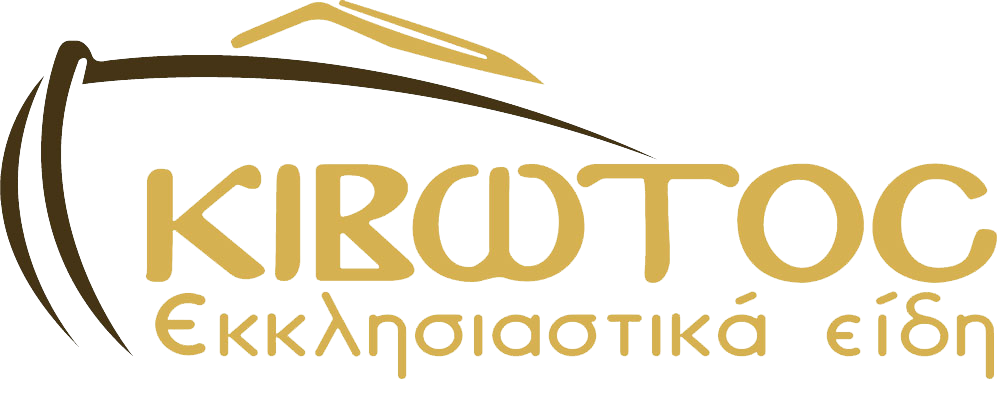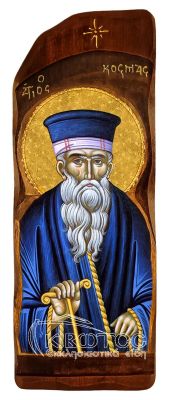Orthodox Icon Saint Cosmas
The Orthodox Icon of Saint Cosmas is lovingly crafted in natural poplar wood. Its technique is lithography, while the wood is carved with a wavy outline that gives a modern touch to the icon.
Its embossed representation makes it a unique piece which requires high craftsmanship to be made. Its special design manages to combine traditional and modern elements, making it the most loved icon design in the customers preferences!
It is manufactured in Greece by experienced craftsmen and is produced in 4 dimensions in order to cover every need. Finally, it is worth noting that it has been specially treated and varnished to have maximum resistance to time and damage.
━━━━━━━━━▼━━━━━━━━━
Saint Cosmas of Aetolia
Saint Kosmas, also known as Patrocosmas, was a light-bearing apostle of the Gospel, during the dark years of Turkish slavery. The Church of Christ, to honor his struggle and contribution, named him Isapostolos. He was born in the village of Taxiarchis, in the province of Apokoros, Nafpaktia, in 1714, to pious parents. At the age of twenty, he went to Mount Athos, to study at the newly founded school of Vatopedi. In 1749 he went to the Athoniada School of Mount Athos, where he studied at a higher level in theology and philosophy. He became a monk in the Filotheou monastery with the name Kosmas.
In 1759 he left the monastery and by order of Patriarch Seraphim began his tours. He first preached in Constantinople and then went to Aitoloakarnania. With a new license he visited the Dodecanese and Mount Athos. He then toured Thessaloniki, Veria, throughout Macedonia, arrived at Chimara, returned to Southern Epirus and from there ended up in Lefkada and Kefallinia. He also went to Zakynthos, Corfu and again to Northern Epirus. He encouraged the residents to build schools and teach their children Greek because, as he said, "Greek is the language of the church."Within 16 years of his teaching, 200 schools and many churches were built. Wherever he passed, crowds of people flocked and "sucked" the "nectar" of his holy teaching. One of his characteristics was absolute ruthlessness. He said verbatim: "I have no other cassock than the one I'm wearing."
Finally, the envy of the Jews, in collaboration with the Turks, resulted in the hanging of the saint in Kolikotasi, in the lands of Northern Epirus in 1779 AD. His remains were thrown into the waters of the river Apsos. Despite the stone tied around his neck, the relic floated. It is a fact that the Patriarch had a milder attitude towards Muslims compared to Jews or Catholics, perhaps because the former accepted the possibility of repentance.This belief of his was confirmed in a dramatic way, as Ali Pasha, either out of gratitude or as a sign of repentance, requested that the relics of the saint be collected and a temple built in his name, which was completed in 1814.
Orthodox Church celebrates his memory on August 24
© The texts were edited exclusively for the website www.ekivotos.com and are legally protected. Any reproduction of them for commercial purposes is considered unfair competition and is criminally prosecuted.
Orthodox Icon Saint Cosmas































Validate your login
Sign In
Create New Account